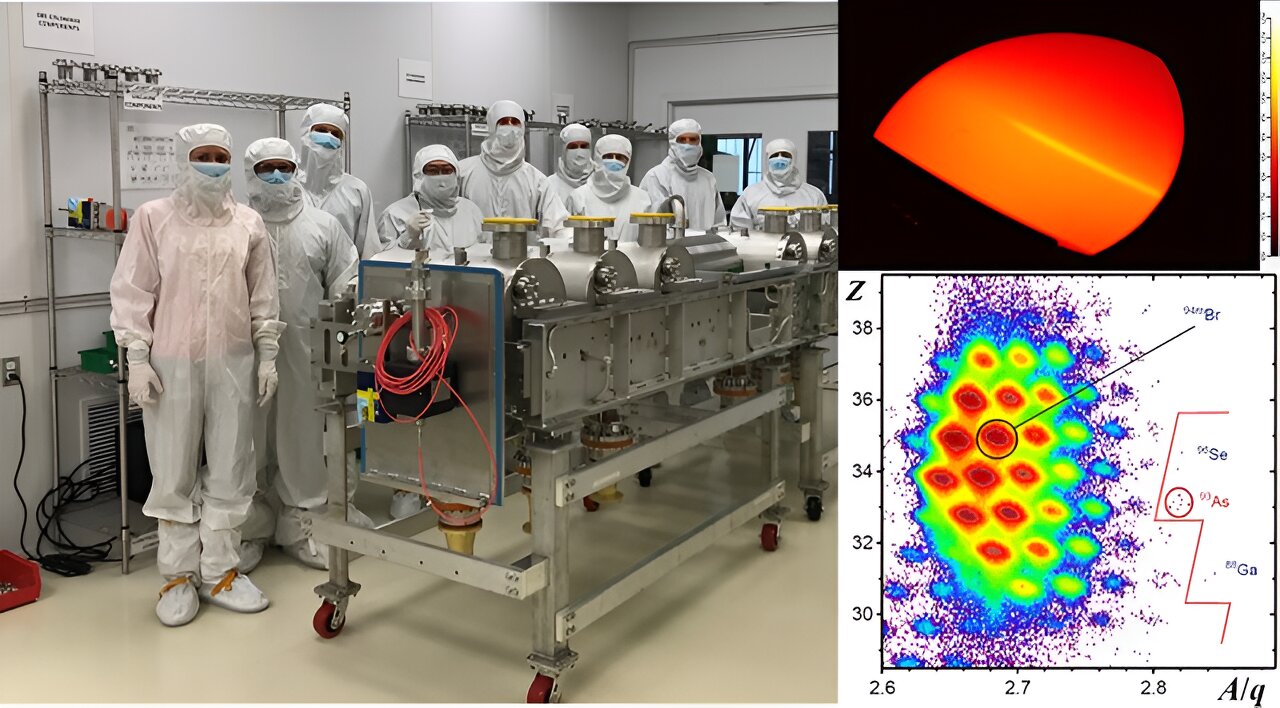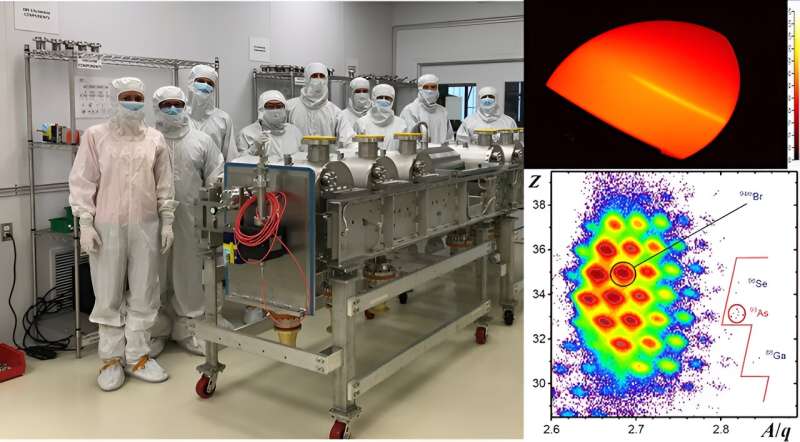

Scientists and engineers at the Facility for Rare Isotope Beams (FRIB) have reached a new milestone in isotope studies. They accelerated a high-power beam of uranium ions and delivered a record 10.4 kilowatts of continuous beam power to a target. The work is published in the journal Physical Review Accelerators and Beams.
Uranium is the most difficult element to accelerate. However, it is extremely important to scientific research. Of the more than 17 highest-priority scientific programs with rare isotope beams identified by the National Academy of Sciences and the Nuclear Science Advisory Committee, more than half require a uranium primary beam.
Researchers value uranium because it can produce a large variety of isotopes after fragmentation or fission.
Establishing the acceleration of a uranium beam with unprecedented power is a crucial milestone for FRIB. The achievement opens a new avenue of research with rare isotopes. Within the first eight hours of operation, the high-power uranium beam enabled FRIB scientists to produce and identify three new isotopes, gallium-88, arsenic-93, and selenium-96.
The high-power uranium beam required the stable operation of all accelerator devices at the highest accelerating gradients. This achievement creates a foundation for providing the heaviest ion beams for creating rare isotopes. It extends scientific reach into unexplored regions of the nuclear landscape.
According to the study, the accelerator facility at FRIB was able to produce the highest-power accelerated continuous wave uranium beam ever seen, leading to the separation and identification of three previously unknown isotopes.
This achievement was possible thanks to the successful operation of FRIB, including a new superconducting linear accelerator composed of 324 resonators in 46 cryomodules, a newly developed liquid-lithium stripper, and novel technologies such as uranium production in the Electron Cyclotron Resonance (ECR) ion source, the unique heavy-ion Radio-Frequency Quadrupole (RFQ), the high-power target and beam dump.
Researchers developed new techniques to set up the simultaneous acceleration of three charge states of uranium after stripping with liquid-lithium film.
This approach achieved a record-high power for uranium. The three previously unobserved isotopes—gallium-88, arsenic-83, and selenium-96—were produced in a 1.2 mm graphite target, separated, and identified for the first time in the Advanced Rare Isotope Separator at FRIB. This work was performed in collaboration with scientists from the United States, Japan, and South Korea.
More information:
P. N. Ostroumov et al, Acceleration of uranium beam to record power of 10.4 kW and observation of new isotopes at Facility for Rare Isotope Beams, Physical Review Accelerators and Beams (2024). DOI: 10.1103/PhysRevAccelBeams.27.060101
Provided by
US Department of Energy
Citation:
Scientists accelerate uranium beam with record power (2024, October 10)
retrieved 10 October 2024
from https://phys.org/news/2024-10-scientists-uranium-power.html
This document is subject to copyright. Apart from any fair dealing for the purpose of private study or research, no
part may be reproduced without the written permission. The content is provided for information purposes only.